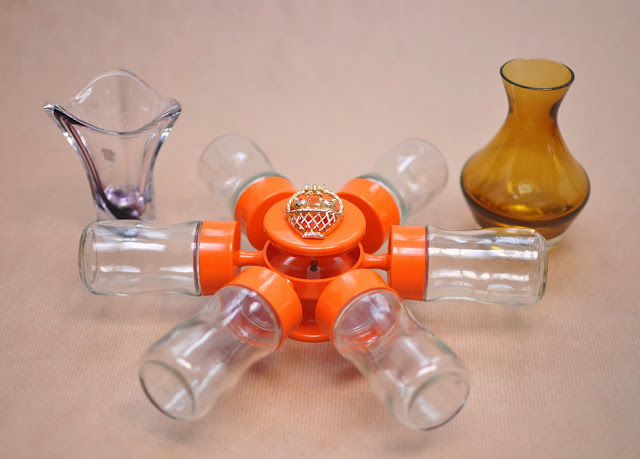Last year
I wrote about finding my first West-Germany clock. After that first lucky hit,
I found many more beauties. I have to admit that my first find is still my
favourite, and I haven't found any more examples by Carstens. Lately however,
I've come across a number of clock bodies which were produced by the company
Herbolzheim Keramik.
Herbolzheim
Keramik must be one of the unsung heroes of West-German pottery. As far as I
know there isn't any information available about the company. Apart from the
fact that the factory was established in…. you guessed it… Herbolzheim, there
is just nothing, nada! (If you have any information, I would love to know!) But
they were prolific producers of West-German pottery.
I did
manage to find out (by checking a lot of online listings) that the company
seems to only have produced kitchenware, mainly cake plates, and many, many
bodies for clocks. I also found a few wall plates, which were based on the
designs for the clocks. Not a single vase in sight!
It looks
like they started producing kitchenware, as a lot of it has the typical pastel
50s/60s colours. I love the clocks though, as they are über seventies! The
glazes are fantastic: oranges with reds, yellow with blue, lime green on a
forest green background. Wow! These clocks are very vibrant.
Most are
based on a rectangular shape and are cool because of the glazing, but some have
fantastic shapes as well.
Herbolzheim probably delivered the clock surrounds to the factories who produced the mechanism. I So far I have seen a number of factories such as Quarz, Quartz, Zentra, Junghans and others all use the ceramic bodies by Herbolzheim.
The
best thing about these clocks is that they are so usable! When you reach that point
where your house just cannot contain another vase (and most of us West-German
pottery collectors know this feeling), you can go looking for one of these
clocks. Every house needs a clock, right?

.JPG)
.JPG)
.JPG)
.JPG)














